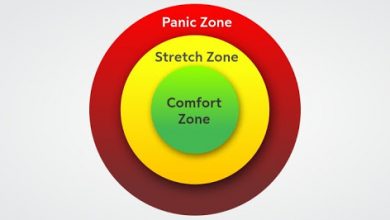Social identity and attachment theories
What causes groups to be so important and have such a significant impact on our lives and choices? What is driving our need to belong to them? What is attachment theory, what is social identity theory, and how do they fit together to explain why we do what we do? This article endeavors to answer these questions and to provide insight on social identity theory, attachment theory, and how they may be linked to each other.

Why did I choose this tool? When I learned about attachment theory, it was a breakthrough for me. It helped me to understand my behavior online and offline, and why certain things mattered so much to me (for example why I would prefer to have a negative response from someone than not to have any response at all). This made me want to delve deeper into this topic in order to understand myself and others better. I also have had a history with groups who use the need for belonging and purpose to recruit people to give them their lives and possessions, and I’ve seen the negative long- term impact that this can have on those individuals and their families. Therefore, I want to bring information about how attachment and social identity work so that people can be aware of these needs and make choices that are conscious and positive for themselves and others.
How does this apply to being a trainer?
Attachment theory will always be playing out in a training setting, and the questions of “are you there” and “are you with me” will be continually asked and answered. No one will say this out loud though, which is why it is important to be conscious of these elements as a trainer. It will also help you to understand that when things go wrong, it is likely that someone received a negative answer (again probably not verbalized) to these questions and therefore they are responding accordingly. On a meta-level, the concepts in this article are very useful when addressing issues of identity, how it is formed, maintained or changed. So in trainings that address culture, identity, racism or discrimination it could be useful to share these concepts with participants so that they can understand the underlying factors at play in these broader topics.
Main content:
Human nature naturally craves love and belonging. It is an inalienable part of who we are, and the only thing that changes from person to person is how that need for love and belonging will be met. For some, it is through a love relationship, for others a strong relationship with their family, and yet for others, it is through common allegiance to a certain cause, belief, or nationality.
To understand this dynamic better, it is useful to understand attachment theory and how it develops in babies and young children:
“According to Bowlby, the attachment system essentially, “asks” the following fundamental question: Is the attachment figure nearby, accessible, and attentive? If the child perceives the answer to this question to be “yes,” he or she feels loved, secure, and confident, and, behaviorally, is likely to explore his or her environment, play with others, and be sociable. If, however, the child perceives the answer to this question to be “no,” the child experiences anxiety and, behaviorally, is likely to exhibit attachment behaviors ranging from simple visual searching on the low extreme to active following and vocal signaling on the other.”– McLeod, S. A. (2008). Social identity theory.
To put it in even simpler terms, we are in essence wired to subconsciously be asking the questions “Are you there?” and “Are you with me?” When we perceive the answer to these questions to be yes, we feel a sense of camaraderie, love and belonging. When we perceive the answer to these questions to be no, we feel lonely, sad, detached, and in some cases, this can even lead to aggression or other negative outcomes.
The interesting thing about this is that most of the time we don’t even realize that we are subconsciously asking these questions, and yet we are being driven by them and what we perceive as their answers.
I spoke about this theory in the video below and how it applies to certain social groups, even when the stated purpose of the group is something completely different. Asking these questions, “are you there” and “are you with me” is such an embedded part of our nature you can be sure that no matter what group you are in, these questions are continually being asked and answered.
So how does all of this apply to social identity theory?
The main ways in which we meet our need for belonging, connection and love as adults are through our relationships and through the groups that we belong to. The more our needs are met, the more attached we become, and the more we make that belonging an integral part of our identity. Social identity can be described in the following way:
Social identity is a person’s sense of who they are based on their group membership(s).
Henri Tajfel (1979) proposed that the groups (e.g. social class, family, football team etc.) which people belonged to were an important source of pride and self-esteem. Groups give us a sense of social identity: a sense of belonging to the social world.
In order to increase our self-image, we may enhance the status of the group to which we belong. For example, trainers are the smartest people! We can also increase our self-image by discriminating and holding prejudice views against the out group (the group we don’t belong to). For example, the Americans, French, etc. are a bunch of losers!
Therefore, social identity may cause us to divide the world into “them” and “us” based through a process of social categorization (i.e. we put people into social groups).
This is known as in-group (us) and out-group (them). Social identity theory states that the in-group may discriminate against the out-group to enhance their self-image.
The central hypothesis of social identity theory is that group members of an in-group will seek to find negative aspects of an out-group, thus enhancing their self-image.
Prejudiced views between cultures may result in racism; in its extreme forms, racism may result in genocide, such as occurred in Germany with the Jews, in Rwanda between the Hutus and Tutsis and, more recently, in the former Yugoslavia between the Bosnians and Serbs.
Henri Tajfel proposed that stereotyping (i.e. putting people into groups and categories) is based on a normal cognitive process: the tendency to group things together. In doing so we tend to exaggerate:
1. the differences between groups
2. the similarities of things in the same group.
We categorize people in the same way. We see the group to which we belong (the in-group) as being different from the others (the out-group), and members of the same group as being more similar than they are. Social categorization is one explanation for prejudice attitudes (i.e. “them” and “us” mentality) which leads to in-groups and out-groups.
We can see this play out even more intensely in cases where an individual doesn’t have strong family ties, which would lead to a natural sense of belonging. It is more common in this case that people will turn to other groups to meet their need for connection and belonging, for instance, the LGBT community or the vegan community. It can even lead in some cases to joining harmful, cult-like or extremist groups. These needs are so strong and so inherent in us that if they are not met in positive ways, it is possible that they will be met by negative means.
In these cases, where someone attaches themselves to a group or circle that they have not been in from birth, we can see more clearly that the element of choice is present in social identity. Sometimes these choices are conscious, such as when someone chooses to belong to a group later on in life and makes it a part of their identity. Sometimes these choices are not conscious, such as when someone identifies with their nationality group because it is the group that they have always known and been a part of.
Reflection questions:
What group(s) are you a part of, that you feel comprise of your “social identity”?
Have you always been a part of these group(s), or did you decide to join them later on in life?
How do you feel the above-mentioned group(s) are answering the questions “are you there” and “are you with me”?
How does that affect your level of attachment to them and your feelings toward them?
Have you ever experienced attachment to a group that was detrimental to you or to others?
If so, did you manage to let go of your attachment to it? How?
How do you differentiate attachment to a group (or even a person) that is beneficial to you and others, and one that is not?
Exercises:
How to apply it in everyday life:
Many groups, companies and organizations play on the normal human need to belong and feel like a part of something. They may use phrases such as “we are your family” or “you belong with us” or similar phrases to enhance this sense of belonging. Some do it in a way that is harmless and they really just want to be there for you, but others will do it in an attempt to get something out of you: your loyalty, effort, money, or any other resource that you have and they need. Unless you’re aware of it, these messages can go straight to your subconscious and get you acting in a way that you wouldn’t choose to otherwise. Here are some questions you can ask yourself in order to determine if a particular group is worthwhile or not:
- Is it helping people, and harming no one?
- Are they honest and upfront about their policies, structure, finances, etc.?
- Do they paint “the others” in a negative light?
- Does allegiance to them mean you have to sever ties with others?
- Do they subtly promote the message that they are better than the rest?
- Do they promote any kind of racism or discrimination?
- Do they treat volunteers like employees? Are they opposed to paying people for their services when the situation warrants it?
- Do they “practice what they preach”, or is there a mismatch between their stated purpose and their everyday actions?
- Do they intentionally create ambiguity, so that no one really understands what’s going on (or at least not those at the “lower-level”)?
- How do they treat those who leave their group?
The groups we are in will become a part of who we are, our social identity. Therefore it is important to choose wisely and carefully, and with love and compassion towards ourselves and others.
Closing:
So here is the dilemma: the need for belonging is inherent and a part of us, and yet the way we meet this need can lead to negative outcomes such as racism, prejudice, stereotyping and discrimination against people who don’t belong to the same group that we do. Is there a solution for this?
I believe that there is. I have made a decision to not think in terms of either/or, but of yes and. It is a delusion that we have to reject something in order to embrace something else. We can fully belong to our groups, communities and relationships without needing to look down on or demean those of others. We can evolve past tribalism and see the interconnectedness between “us” and “them”, thereby dissipating the lie that we have to choose between “our” happiness, survival and wellbeing and “theirs”.





